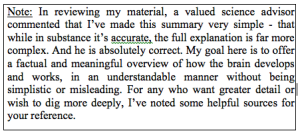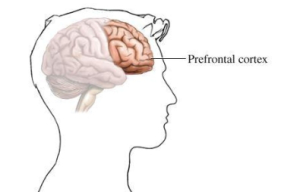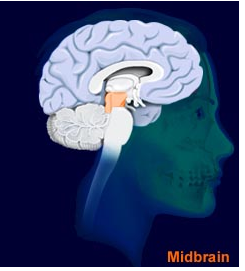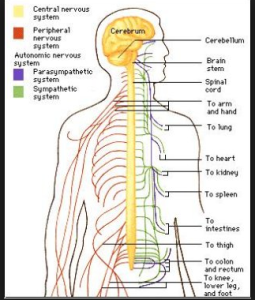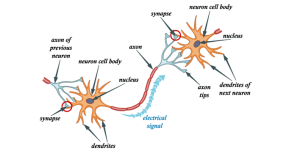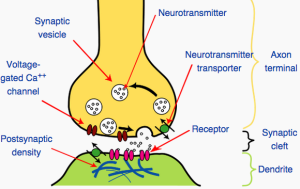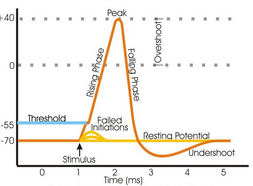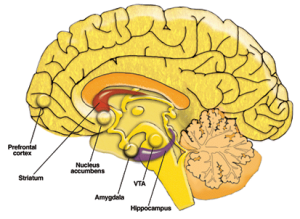Brain Science
I was served my first taste of addiction brain science by the lead member of my advisory board in early 2009, and I was hooked. I just couldn’t get enough of it. (Pardon the word choice.) Bottom line, brain science is tremendously exciting, highly logical, constantly evolving and surprisingly easy to understand. And for that reason, it can be seductive, giving us a sense of clearly understanding things very complex, when in truth, complete understanding of the brain is beyond anyone’s reach at this time, or perhaps at any time.
That said, to get a better understanding of addiction, we first must have a better understanding of the brain. That includes taking on some of the “truths” being taught about the brain and addiction; things that “everybody knows” but no one can prove, and some that simply aren’t true. These misconceptions about the brain have become barriers to progress in our efforts to defeat addiction and they must be removed so that we can move forward.
So with that as my qualifier, the following offers an overview of our 3-pound brain, the most wonderfully complex organ in our body – or anywhere.
Part 1 – Brain Basics: Brain Structure and Development; The Nervous System and How It Communicates
Part 2 – The Continually Developing Brain – Neurogenisis and Neuroplasticity; The Ongoing Mind/Brain Debate; Character and the Brain
Part 3 – Addiction Development, Treatment and Neuroethics – The Next Frontier
Brain Basics – How It Develops
We’ll begin by highlighting the critical brain areas and their basic functions, calling out those most directly associated with addiction.
The human brain develops from back to front and from the inside out, until all regions are formed. A person’s prefrontal cortex (PFC) is the last region to form and is still developing until he or she is at least 24 or 25 years of age[i]. This area of the brain, referred to as our executive region, houses our faith, values, morals, beliefs, judgment, impulse control, decision-making and strategic planning capabilities. The fact that it is not fully formed until our mid-20’s helps explain why young people tend to be impulsive and are inclined to high-risk behaviors. When we wonder why our teens sometimes “act like they have half a brain,” it’s at least partly because their brains are still under construction.
The late-developing PFC plays at least two critical roles in addiction:
- It contributes to 85% of all young people taking the risk of experimenting with drugs and alcohol before they reach 17 years of age.
- It raises questions about whether young people are capable of developing full-blown addiction given that its closing bond is with the mature PFC. More on this later.
Brain Basics: The Parts
The brain can be divided in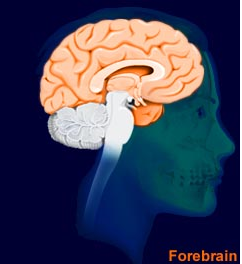 to three segments: The hindbrain, midbrain and forebrain. The hindbrain is the first area to develop and includes the upper part of the spinal cord, brain stem and cerebellum. It controls our autonomic, or unconscious, vital functions such as respiration and heart rate, and coordinates our movements.
to three segments: The hindbrain, midbrain and forebrain. The hindbrain is the first area to develop and includes the upper part of the spinal cord, brain stem and cerebellum. It controls our autonomic, or unconscious, vital functions such as respiration and heart rate, and coordinates our movements.
The midbrain develops next. In the upper part of the brainstem, the midbrain is responsible for our sensory processes and for transmitting information between the hindbrain and forebrain. It houses the ventral tagmental area (VTA), a region involved in processing sensation-related input, and central to our understanding addiction.
And finally, the foreb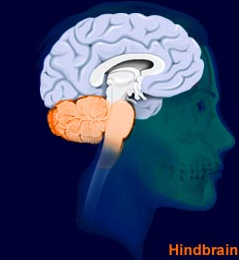 rain, the largest and most complex part of our brain, processes input from throughout the brain and body to become thought and action. It houses the limbic system (processes emotions and memory), thalamus (relay station for information entering forebrain, also regulates sleep), hypothalamus (regulates response to pleasure and pain, signaling autonomic and hormonal systems), basal ganglia (critical to forming habitual behaviors), and cerebral cortex (80% of brain, responsible for high-level behavior and mental processing, prefrontal cortex).
rain, the largest and most complex part of our brain, processes input from throughout the brain and body to become thought and action. It houses the limbic system (processes emotions and memory), thalamus (relay station for information entering forebrain, also regulates sleep), hypothalamus (regulates response to pleasure and pain, signaling autonomic and hormonal systems), basal ganglia (critical to forming habitual behaviors), and cerebral cortex (80% of brain, responsible for high-level behavior and mental processing, prefrontal cortex).
Addiction develops over time and at some point, involves each of these three brain areas.
The Nervous System
Referred to as the body’s control and communication network, the brain’s nervous system is responsible for receiving and processing all information in the body. It’s divided into two sections: the central nervous system (CNS) made up of the brain and spinal cord; and the peripheral nervous system (PNS) composed of our sensory organs and all the nerves that connect them with the rest of our body. Very simply, the organs and nerves of the PNS sense and transmit information about conditions inside and outside the body to the CNS where it is evaluated before sending signals back through the PNS to the various parts of the body to regulate their operation.
Though people’s nervous systems all follow the same general methods of operation, every person’s system is unique, contributing to each of us experiencing the same event, flavor, smell, interaction, or any other stimulus or sensation, differently. The fact of our distinct responses to like stimuli helps explain our differing tastes and preferences in lifestyle, entertainment, activities, relationships, food, fashion and more. It influences the degree of our motivation and drive, the amount of risk we’ll take and the effort we’ll exert to achieve a goal. And it plays a role in people developing their own preferred manners of behavior that, in some cases, can grow into dependencies and even addiction.
How Brain Cells Communicate
Our nervous system is made up of two types of cells: Neurons and the Glial cells that support them. Our neurons – billions of them – are the communicators of our nervous systems. Though each neuron is designed with the same basic elements – antennae-like dendrites to receive information, a cell body to process it, and an axon to pass the information along to other neurons, muscles and glands – their specific architecture, such as individual dendrite branching patters, varies.
Note: Though for decades, communication has been thought to flow only in one direction through a neuron (from dendrite – to cell body – to axon) a recent study by German neuroscientists reports on possible exceptions[ii]. This is relevant to our discussion only as it underscores the point that long-held beliefs about the brain are being changed as technology opens new windows that let us see and understanding how the brain actually functions. For the sake of this overview, however, we will stick with the one-way information flow that applies in most cases.
Along the neuron’s axon are vesicles, balloon-like structures filled with one of 60+ types of brain chemicals or neurotransmitters[iii]. And while we generally think of the different types of neurotransmitters as having a single function, scientists are learning that each can play a variety of roles and even interact with other neurotransmitter types to serve still more purposes[iv]. For example, one of the most studied neurotransmitters, and at the heart of our understanding addiction, is dopamine which is best known for its role in communicating reward or pleasure, but also is recognized for its involvement in memory, learning, motivation and more.
When properly signaled by incoming messages, vesicles release their load of neurotransmitters through terminal buttons, bulbous structures at the end of each axon, where they travel across a synapse, a gap between the axon of one neuron and the dendrites of another.
There the neurotransmitters bind with corresponding receptors to activate the next neuron, pass along their message, and then be recycled or destroyed. This pattern is repeated along a neural path for final message delivery at a specified point – an area of the brain, muscle or gland – to initiate or inhibit an action or response.
We need to note here that neurotransmitters only can be effective in handing off information if corresponding receptors are ready and able to bind, receive and send the message on to the next stop.
Meeting Thresholds
While the brain’s communi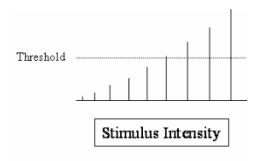 cation system is pretty straightforward, certain conditions must be met at each step for transmission to continue to a destination. The process begins as stimulus is received, signaling the release of a volume of neurotransmitters. The greater the stimulus, the more neurotransmitters released. And again, no two people will release the same volume in response to a shared stimulus; one volume is not better than another, they are just different.
cation system is pretty straightforward, certain conditions must be met at each step for transmission to continue to a destination. The process begins as stimulus is received, signaling the release of a volume of neurotransmitters. The greater the stimulus, the more neurotransmitters released. And again, no two people will release the same volume in response to a shared stimulus; one volume is not better than another, they are just different.
But the actual neural transmission process cannot begin until the released neurotransmitters meet a minimum threshold sufficient to cue waiting vesicles to release their neurotransmitters into a synapse adjacent to another neuron.
To continue, appropriate receptors must be ready and able to bond briefly with the neurotransmitters, take their message and pass it along to the cell body where it will move into the axon. Then, if threshold levels again are met, waiting vesicles will be signaled to release their neurotransmitters to the next stop. 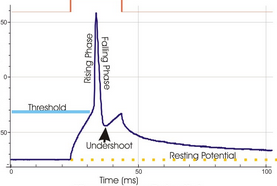
Threshold levels vary among neural systems of all individuals, with none being better or worse than another. But unless and until a stimulus reaches an established threshold level, if it undershoots the threshold, the waiting neurotransmitters will not be released.
It’s an all or nothing situation. This point is critical to understanding how people develop addiction.
Let’s take an example with three friends. Two of the friends have high thresholds requiring intense stimuli for experiencing sensations of pleasure, while the third has a low threshold level. All three go out and experiment with substances. All three experience the extreme sensation produced by the substances. The next day, the friend with a low threshold resumes everyday pleasurable experiences, such as watching movies or walking in the park, and feels a desired reward.
One of the two friends with high thresholds is a competitive swimmer, and the next day returns to a rewarding routine of strenuous work-outs and interaction with teammates. The third friend, also with a high threshold, does not feel rewards from simple daily activities, is not immersed in any extremely stimulating academic, athletic, music or other intense activity, and after experimenting with substances, resumes a life that offers little feeling of reward. The next time this person feels a compelling need for something more, and has not yet found a productive highly stimulating pursuit, he or she now knows how to get it.
Neural Communication and Motivation
The chain of communication, from the originating stimulus to an individual’s ultimate response, is the same basic process in all people. But as mentioned earlier, in reaction to a shared stimulus, no two people will release the same volume of NT
and transmit the same volume of neurotransmitters at the same level or in the same timeframe. And as an effect, each person will experience that same stimulus in his or her own unique manner.
While for one person, the stimulus might exceed the minimum threshold to release great volumes of a neurotransmitter leaving them feeling great reward, for another, the same stimulus might be insufficient, and they might feel no pleasure in response. One is not “normal” and the other in need of correction. What we do have is one person that is satisfied with the stimulus, and another that will be motivated to seek more. They are unique, just as they were designed.
It is critical to note a couple of things at this point.
- Wanting to feel a reward or pleasure is not a hedonistic desire. It is a basic human need that motivates us and drives our choices and behavior. People will find a way to feel pleasure; it’s just a matter of how.
- As of this date, no one can objectively measure neurotransmitter volumes, though several research institutes are nearing methods that might get us close[v]. The obvious implication is that without a means to measure neurotransmitter counts, it is impossible to set an objective norm for stored, released or transmitted neurotransmitter volumes.
 Without an objective norm or standard, we cannot determine whether a neural system is functioning within or outside a normal range. And we certainly cannot objectively identify any neurotransmitter system to be functioning improperly, or to be “dysregulated.” meaning there is an “impairment of the physiological regulatory mechanism” resulting in too little neurotransmitter being released in response to a control stimulus.
Without an objective norm or standard, we cannot determine whether a neural system is functioning within or outside a normal range. And we certainly cannot objectively identify any neurotransmitter system to be functioning improperly, or to be “dysregulated.” meaning there is an “impairment of the physiological regulatory mechanism” resulting in too little neurotransmitter being released in response to a control stimulus.
For decades however, the addiction industry has defined addiction as a chronic disease or condition stemming from a dysregulation of the (mesolimbic) neurotransmitter (dopamine) system, and has encouraged medication as part of its treatment to offset the effects of the impairment. To state the obvious, given that NT volumes cannot be measured, not only are we unable to objectively diagnose a neurotransmitter system as being dysregulated, but we also are unable to objectively evaluate the effect of any medications on the system’s performance.
What we can do is draw reasonable assumptions about addiction or related conditions by correlating a person’s symptoms and behavior with our understanding of the brain, how it operates, and how it might contribute to the symptoms.
For example, it would be reasonable to assume that a substance dependent person had a high reward threshold level that could be reached only through intense stimuli. But to draw a causal relationship between the two would suggest that all people that have high reward thresholds and experiment with substances become dependent on substances. And since we can estimate that about 40% of the people have reward thresholds somewhere above a standard or average level, and because nearly all people will experiment with substances, this cause-and-effect assumption does not hold up. Further, to say that those who do become dependent on substances are chronically so, implies that the brain cannot grow and learn new intense behaviors to replace the existing dependency – something that evidence suggests can be done, at any age. Much more on this when we discuss neurogenesis and neuroplasticity in Part 2.
Rational Brain – Emotional Brain
As the forebrain’s Prefrontal Cortex (PFC) is called our executive brain region and is principally involved in our more rational thinking, the Limbic System, a number of interconnected brain structures, is referred to as our emotional brain for its involvement with our feelings of reward, pleasure and overall mood. What is less known is that the system also carries messages that influence our memory and learning, and through pathways that extend into the prefrontal cortex, is involved in our decision-making.
Though not surprising that our emotions influence our decisions, the research uncovering neural connections that bring emotional messages into the brain’s rational processes is new, and not without contention. Like all things being revealed through new technology in brain science, this changes a lot of preconceptions from which other ideas have grown, and it requires a lot more study to understand its implications. In fact, there’s a relatively new field of Neuroeconomics[vi] that is dedicated to exploring this together with other neural processes influencing decision-making.
The limbic system, and its interplay with other brain regions and functions, especially with the PFC, is central to understanding addiction, and how to overcome it.
The Reward Pathway
The final brain area to be covered before we wrap up this section on brain basics is the Mesolimbic Neurotransmitgetr Dopamine System, also known as our reward pathway. Its name says it all. The pathway moves up from the central part (meso) of the brain and limbic system, and is the principle neural pathway for carrying messages of reward to critical brain regions, allowing us to feel varying degrees of reward or pleasure.
The system is the primary focus of addiction science. In fact, addiction has been defined as a direct effect of the Mesolimbic Neurotransmitter Dopamine System functioning in a manner outside the (assumed) normal levels of neurotransmitter dopamine release and transmission. Drawing from our earlier discussion, when the industry refers to a mesolimbic system “dysregulation leading people to use substances,” they are identifying a system that a high reward threshold – one that requires more intense stimuli to signal neurotransmitter dopamine release, and that some will satisfy with substance use.
This again begs the question of whether the high reward threshold is something inherently harmful, meaning substance use is the only expected outcome, or whether it merely is a powerful motivator, meaning it drives one to pursue more intense stimuli or behavior, without bias to the type of behavior chosen. But for now we’ll just address how the system works.
The reward pathway begins in the midbrain’s ventral tegmental area (VTA) where neurotransmitter (NT) dopamine is released in volumes relative to the intensity of stimuli. (The more intense the stimulus, the more NT-filled vesicles released) Released NT dopamine bind with appropriate receptors and the transmission process is underway.
The first major stop along the pathway is the Nucleus Accumbens (NAc) where the transmitted NT dopamine delivers a message of reward in proportion to the NT volume received. The Amygdla chimes in, helping to associate the source of a particular stimulus with its sensory response – whether it was rewarding or aversive (i.e. roller coaster ride felt thrilling, terrifying, nauseating). The hippocampus then stores a memory of the sensory experience and its context for access when the person wishes to repeat the feeling.
When the experience with its desired response are repeated enough times, the message advances to the pathway’s final stop, the prefrontal cortex, where it can form a meaningful bond and take on true significance to the individual.[vii] When the bonding involves drugs, alcohol or other harmful behaviors, it is identified as full-blown addiction. When it involves productive intense behaviors, it tends to be identified as exceptional.
Who’s In Charge?
This is a good place to stop and take on the big issue of whether we are at the mercy of our evolved brain and its electrochemical processes to determine how we think, feel and behave. The short answer is, absolutely not.
In later posts we’ll review opposing views in the emotional debate over this question of who’s really in charge? I’ll be asking for your input in hopes of broadening the discussion. But for now, since I’m running this blog, we’ll go with the position driving The Stand, which can be summed up as follows.
Our brain is a remarkable tool, uniquely designed by God to help each of us experience our environment distinctly and fully, sense how it makes us feel, and then use the information, as viewed through our faith and character, to form our own judgments and decisions about how to respond and proceed.
Part 2 of our discussion on brain science will be posted by January 1.
Imagine – 2015!
[i] D.Yurgelun-Todd, “Emotional and Cognitive Changes During Adolescence”, Neurobiology, April 2007
[ii] Berlin neuroscientists identify “wrong-way” neuron communication and filters to guard against excessive cell activation. http://www.charite.de/en/charite/press/press_reports/artikel/detail/informationsfluss_im_gehirn_ist_keine_einbahnstrasse/
[iii] To date 50 – 60+ different neurotransmitters identified, likely more remain to be found. http://www.utexas.edu/research/asrec/neuron.html
Dana Foundation discussion on neurotransmitters and new understanding of functions http://www.dana.org/News/Details.aspx?id=43536
[iv] Dana Foundation primer on neurotransmitters and how new information is changing how we understand their roles. http://www.dana.org/News/Details.aspx?id=43536
[v] patent application for method to measure neurochemicals in vivo
study giving first real time view of neurotransmitter release and where it travels, http://mcgovern.mit.edu/news/news/delving-deep-into-the-brain/http://techtransfer.universityofcalifornia.edu/NCD/19176.html
Another report on MIT study, explaining 3-D model of neurotransmitter activity http://cen.acs.org/articles/92/i18/Method-Provides-3-D-Map.html
[vi] The role of emotion in decision-making: A cognitive neuroeconomic approach Journal of Biomedical Informatics http://www.j-biomed-inform.com/article/S1532-0464(06)00045-1/fulltext
[vii] Ichan School of Medicine at Mt. Sinai, Neuroscience Dept, Nestler Lab http://neuroscience.mssm.edu/nestler/brainRewardpathways.html

